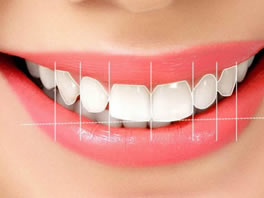
Making a person's smile special is called smile design. Considering the structure and color of the person's teeth, jaw shape, size of the gums, face shape and age; The most suitable, healthy, natural and aesthetic smile is planned by the physician and provided in line with the patient's special requests.
The gums of the person to whom the smile design is applied gain a natural appearance, tooth colors are corrected, cracked and broken teeth are repaired, and the normalization of the muscles is ensured by facilitating chewing.
What is smile design?
One of the first concepts that comes to mind when it comes to aesthetic dentistry is "smile design". Smile design; It is the process of restoring teeth and gums that have deteriorated aesthetically due to various reasons, to a natural and beautiful appearance as much as possible, taking into account the face shapes and needs of the patients. Smile design, which is a multidisciplinary approach, is carried out by applying many processes together.
What processes does smile design involve?
Since the aesthetic requirements of each patient will be different, the procedures to be performed are determined individually. While determining these procedures, the patient; Factors such as facial features, gender, age and expectations are taken into account.
First of all, existing decayed teeth and gum diseases are treated, tooth cleaning procedures are applied. Afterwards, procedures are determined according to the needs of the patients. These transactions are generally; They can be counted as gingival aesthetic interventions called gingivectomy, teeth whitening (bleaching) methods, compensation of tooth deficiencies with implant and prosthesis applications, porcelain laminates and coatings, zirconium coatings and orthodontic treatments (wire treatment).
How is Smile Design done?
First of all, it is very important to understand the aesthetic expectations of the patient correctly and to determine the needs correctly in smile design. Problems are determined and plans are made on the models prepared by means of measurements taken from the patient's mouth. Then, measurements are made using special programs in the computer environment with the oral and facial photographs of the patients, and the fit for the face shape is calculated. The most approximate images that will occur after the treatment are presented to the patient with programs and temporary restorations prepared in accordance with the original in the patient's mouth and their opinions are taken.
After the planning is completed, if there is no need for orthodontic treatment, first of all, the level disorders in the gums are arranged. In cases where tooth deficiencies are found, planned implant procedures and other surgical applications deemed necessary are performed. After the recovery periods of surgical applications are completed, teeth whitening procedures are applied if needed. After this stage, the visual and formal defects in the teeth are sometimes removed by means of aesthetic composite fillings. In cases where this method is not sufficient, porcelain laminates and veneers and zirconium veneers come into play. For porcelain laminate applications, either no or minimal abrasions are performed on the teeth. If porcelain or zirconium applications are deemed appropriate, some changes can be made by taking the patient's ideas again during the rehearsals made during the stages. During all these gingival and dental applications and rehearsals, lip shape and contour are also taken into consideration and the targeted design is finalized.
Sometimes, medical aesthetic applications are also used during smile design. Dermal filling on the lips and face areas, etc. smile can be brought to the fore with applications.
